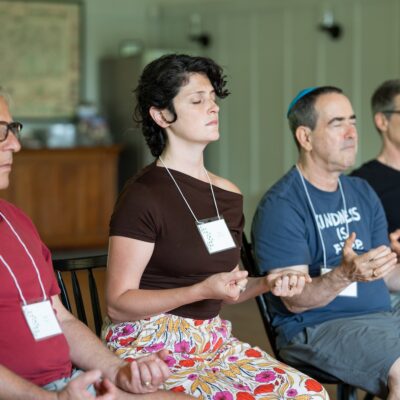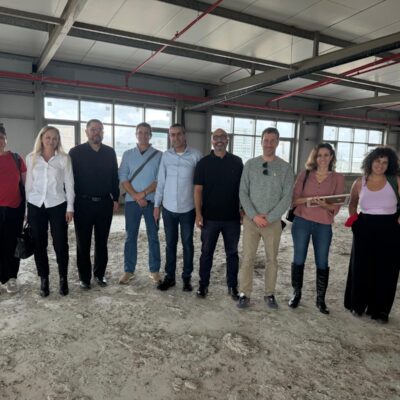A Funder Approach to the (Seemingly) Limitless World of Online Learning

By Seth Linden and Josh Miller
[This post is the last in the series on the new report, The Future of Jewish Learning is Here: How Digital Media Are Reshaping Jewish Education, by Stanford University’s Ari Y. Kelman. The report, commissioned by the Jim Joseph Foundation, was released in conjunction with the recent Jewish Funders Network conference. The series shares multiple perspectives on the findings and questions raised in The Future of Jewish Learning.]
The Future of Jewish Learning Is Here is an admittedly ambitious title for a report. Yet it seems to capture both the seemingly endless opportunities that new technology presents and the critical reality that people are utilizing many of these technologies to learn and to positively influence their lives. Digital media, specifically for Jewish learning purposes, are being consumed on a meaningful scale, in different ways, and by diverse groups of people, and are changing how we, as a field, should think about Jewish education.
For the Jim Joseph Foundation, this report offers much to unpack and to reflect on. A decade ago, digital media was in its nascent stage of opening new and more opportunities for Jewish learning. Yet, the Foundation shied away from any significant investment. The space, for the Foundation, presented too many unknowns. At the same time, our approach and understanding of Jewish education admittedly was not yet broad enough to include some of the very real learning that was in fact occurring online. Thus, The Future of Jewish Learning Is Here is indicative of our own evolution in thinking and recognition that the nature of Jewish learning has, and continues to, evolve – and that it is driven in part by digital media opportunities today.
A few years ago, the Jim Joseph Foundation and the William Davidson Foundation released Smart Money: Recommendations for an Educational Technology and Digital Engagement Investment Strategy, which shared both a landscape report of the trends and tools used in Ed Tech and a set of recommendations for our foundations to consider about how we might invest in them. Following the report, the Foundation made several new grants to support some new “digital-first” Jewish education platforms as a way to expand our reach and deepen our learning and involvement with the tools of online learning. Our most important insight from getting to know these platforms is affirmed for us in this new report – people are learning online and those online engagements should be viewed as educational. While of course online learning looks different than learning in a classroom, summer camp, or beit midrash, we now see how online learning can be deeply meaningful and substantial – and often much more accessible than more traditional learning experiences.
By growing our understanding of online Jewish learning and of how these platforms are used, those of us interested in designing or investing in these learning experiences can make better informed decisions to address learners’ needs. Expanding beyond the landscape analysis in Smart Money, the Future of Jewish Learning report provides rich, compelling insight and information into how, why, and when people learn online. People turn to online Jewish learning because the experiences are accessible, can be tailored to their personal needs or questions, help connect them to a sense of community, and for many other reasons.
Advancements in digital Jewish media have minimized, if not outright eliminated, the concerns of physical space, time, teachers, and other factors that impact a person’s ability to learn. Moreover, while these previous limitations often are rendered irrelevant when a user learns through any kind of online platform, The Future of Jewish Learning makes clear that Jewish content providers offer a particularly specialized experience, replete with an “imprimatur” that provides a sense of credibility. At the same time, these uniquely Jewish platforms can also serve as vehicles for powerful real-life connections among people.
As a funder, we welcome these key findings while recognizing the call to action they seem to present. First and foremost, we know we need to learn more and to better understand how this form of learning integrates into peoples’ lives. While this report sheds light on ways in which online learning makes people less reliant on traditional institutions, offers comfort in exploring questions about Judaism, fosters connections and a sense of connection, and often follows the rhythm of the Jewish calendar, there is still much we don’t know. We are eager to continue to learn with others in the field about the communities that evolve around online learning; the types of platforms best suited for certain learning experiences or people; how educators can be further utilizing online learning tools for themselves and with their students; what this means for Jewish family experiences; and how these tools can help us reach more diverse populations of learners. These are timely and big questions that we are eager to explore.
More and more, the Foundation approaches its own learning by investing in R&D to pursue innovation and to try new experiments. This approach is warranted both in traditional learning and in online learning experiences. In the limitless world of online learning, R&D is an important way to push the field forward and to bring offerings to scale. The possibilities for where, when, and how learning can happen is entirely different than a decade ago. Let’s explore these new opportunities together, as a field, so that anyone can engage in Jewish learning – wherever, whenever, and in whatever way is meaningful and conformable for them. The future is here.
Josh Miller is Chief Program Officer at the Jim Joseph Foundation. Seth Linden is a Program Officer at the Foundation. The complete report, The Future of Jewish Learning is Here: How Digital Media Are Reshaping Jewish Education, is available for download here.

 Add EJP on Google
Add EJP on Google









